
Charles Bulfinch was an early American architect, and has been regarded by many as the first American-born professional architect to practice.

The Ursuline Convent riots occurred August 11 and 12, 1834, in Charlestown, Massachusetts, near Boston, in what is now Somerville, Massachusetts. During the riot, a convent of Roman Catholic Ursuline nuns was burned down by a Protestant mob. The event was triggered by reported abuse of a member of the order, and was fueled by the rebirth of extreme anti-Catholic sentiment in antebellum New England.
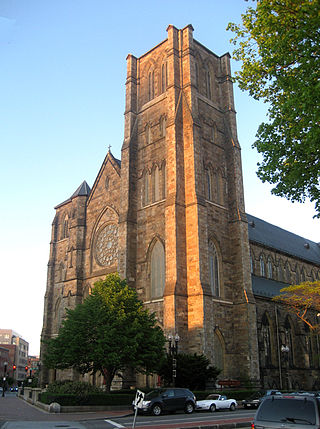
The Metropolitan Archdiocese of Boston is a Latin Church ecclesiastical territory, or archdiocese, of the Catholic Church in eastern Massachusetts in the United States. Its mother church is the Cathedral of the Holy Cross in Boston. The archdiocese is the fourth largest in the United States.

Jean-Louis Anne Madelain Lefebvre de Cheverus was a French-born Catholic prelate who served as the first Bishop of Boston. He later served as Bishop of Montauban and Archbishop of Bordeaux, both in France. He was elevated to the cardinalate in 1836.
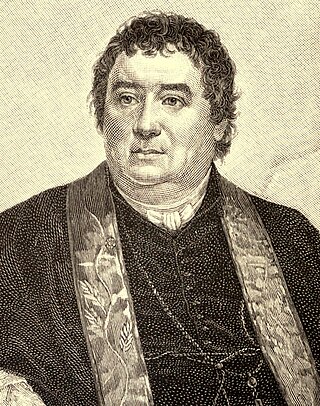
Benedict Joseph Fenwick was an American Catholic prelate, Jesuit, and educator who served as the Bishop of Boston from 1825 until his death in 1846. In 1843, he founded the College of the Holy Cross in Worcester, Massachusetts. Prior to that, he was twice the president of Georgetown College and established several educational institutions in New York City and Boston.

The Cathedral Basilica of Saints Peter and Paul, head church of the Roman Catholic Archdiocese of Philadelphia, stands on 18th Street on the east side of Logan Square, at the Benjamin Franklin Parkway. It was designed by Napoleon LeBrun to plans by the Reverend Mariano Muller and the Reverend John Tornatore and built between 1846 and 1864. Its dome and Palladian facade, by John Notman, were added after 1850. The interior was decorated by Constantino Brumidi.

Patrick Charles Keely was an Irish-American architect based in Brooklyn, New York, and Providence, Rhode Island. He was a prolific designer of nearly 600 churches and hundreds of other institutional buildings for the Roman Catholic Church or Roman Catholic patrons in the eastern United States and Canada, particularly in New York City, Boston and Chicago in the later half of the 19th century. He designed every 19th-century Catholic cathedral in New England. Several other church and institutional architects began their careers in his firm.
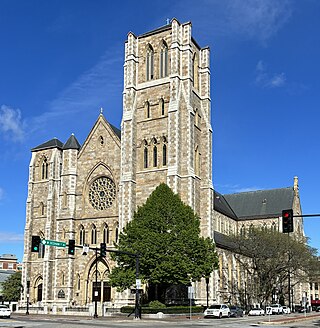
The Cathedral of the Holy Cross is the cathedral of the Roman Catholic Archdiocese of Boston and is the largest Roman Catholic church in New England.
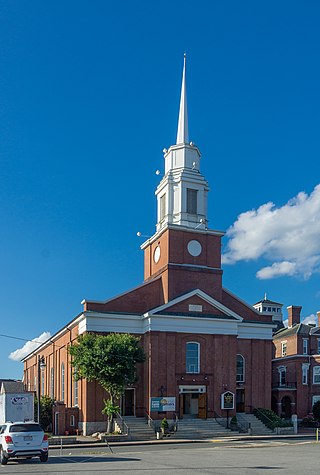
St. John's Catholic Church, established in 1834, is an historic Roman Catholic parish church in Worcester, Massachusetts. It is the oldest established Catholic religious institution in the city, and the oldest Catholic parish in New England outside of Boston. On March 5, 1980, its 1845 church building was added to the National Register of Historic Places.

St. Stephen's Church is a historic church in the North End of Boston, Massachusetts. It was built in 1802–1804 as the New North Church or New North Meeting House and was designed by the noted architect Charles Bulfinch. It is the only one of the five churches he designed in Boston to remain extant. The church replaced one which had been built on the site in 1714 and enlarged in 1730. The Congregationalist church became Unitarian in 1813, and the church was sold to the Roman Catholic Diocese in 1862, and renamed St. Stephen's. It was restored and renovated in 1964-65 by Chester F. Wright, and was added to the National Register of Historic Places in 1975.
Holy Cross Church, or variants thereof, may refer to:

Franklin Place, designed by Charles Bulfinch and built in Boston, Massachusetts, in 1793–95, included a row of sixteen three-story brick townhouses that extended in a 480-foot curve, a small garden, and four double houses. Constructed early in Bulfinch's career, Franklin Place came after he had seen the possibilities of modern architecture in Europe and had determined to reshape his native city. It was the first important urban housing scheme undertaken in the United States, and the city's first row-house complex. However, years of decline and the push of industry into the area forced its demolition in 1858.
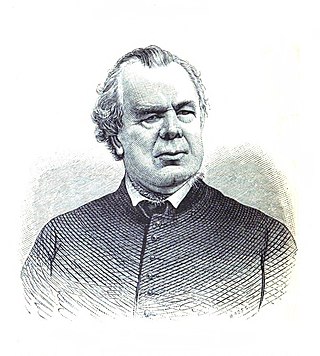
James Fitton was one of New England’s foremost Roman Catholic missionary priests.

St. Joseph Catholic Church is a Roman Catholic church serving Beacon Hill and the West End in Boston, Massachusetts. Designed by Alexander Parris and built in 1834 for the Twelfth Congregational Society, it was purchased by the Boston Roman Catholic Diocese in 1862.

Boylston Market (1810-1887), designed by architect Charles Bulfinch, was located in Boston, Massachusetts, on the corner of Boylston and Washington Streets. Boylston Hall occupied the third floor of the building, and functioned as a performance and meeting space.
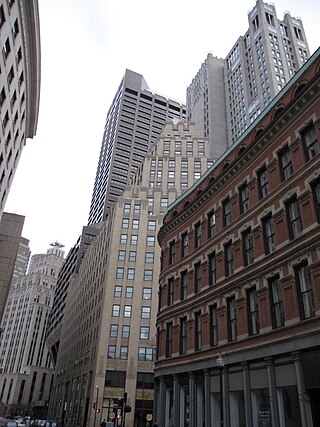
Franklin Street is located in the Financial District of Boston, Massachusetts, United States. It was developed at the end of the 18th century by Charles Bulfinch, and included the now-demolished Tontine Crescent and Franklin Place.

William Massey Stroud Doyle (1769–1828) was a portrait painter and museum proprietor in Boston, Massachusetts.
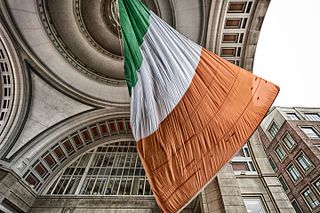
People of Irish descent form the largest single ethnic group in Massachusetts, and one of the largest in Boston. Once a Puritan stronghold, Boston changed dramatically in the 19th century with the arrival of immigrants from other parts of the world. The Irish dominated the first wave of newcomers during this period, especially following the Great Irish Famine. Their arrival transformed Boston from an Anglo-Saxon, Protestant city into one that has become progressively more diverse. These people hired Irish as workers and servants, but there was little social interaction. In the 1840s and 50s, the anti-Catholic, anti-immigrant Know Nothing movement targeted Irish Catholics in Boston. In the 1860s, many Irish immigrants fought for the Union in the American Civil War, and that display of patriotism helped to dispel much of the prejudice against them.
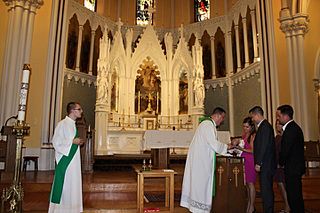
St. Mary of the Assumption Church is a parish of the Roman Catholic Church in Dedham, Massachusetts, in the Archdiocese of Boston.
The history of St. Mary's Church in Dedham, Massachusetts begins with the first mass said in Dedham, Massachusetts in 1843 and runs to the present day.






















